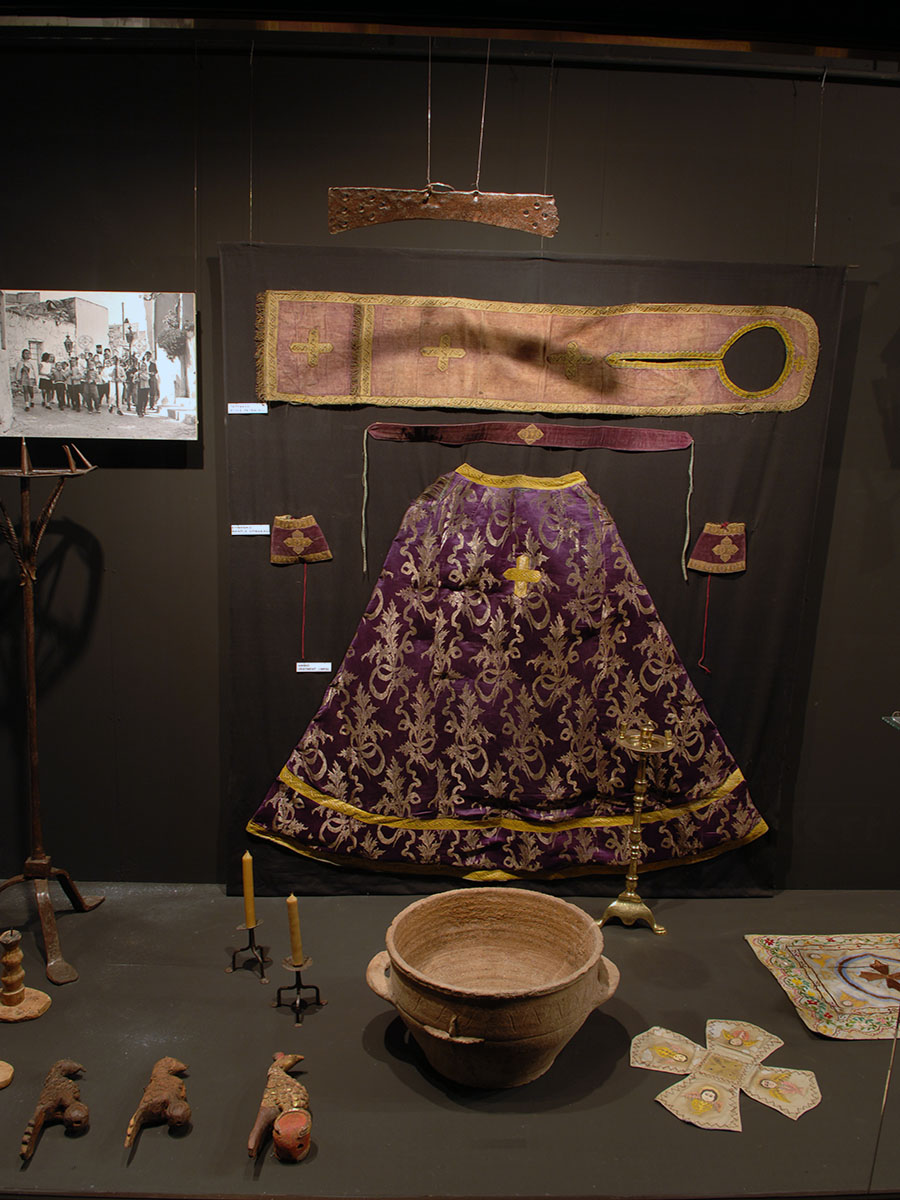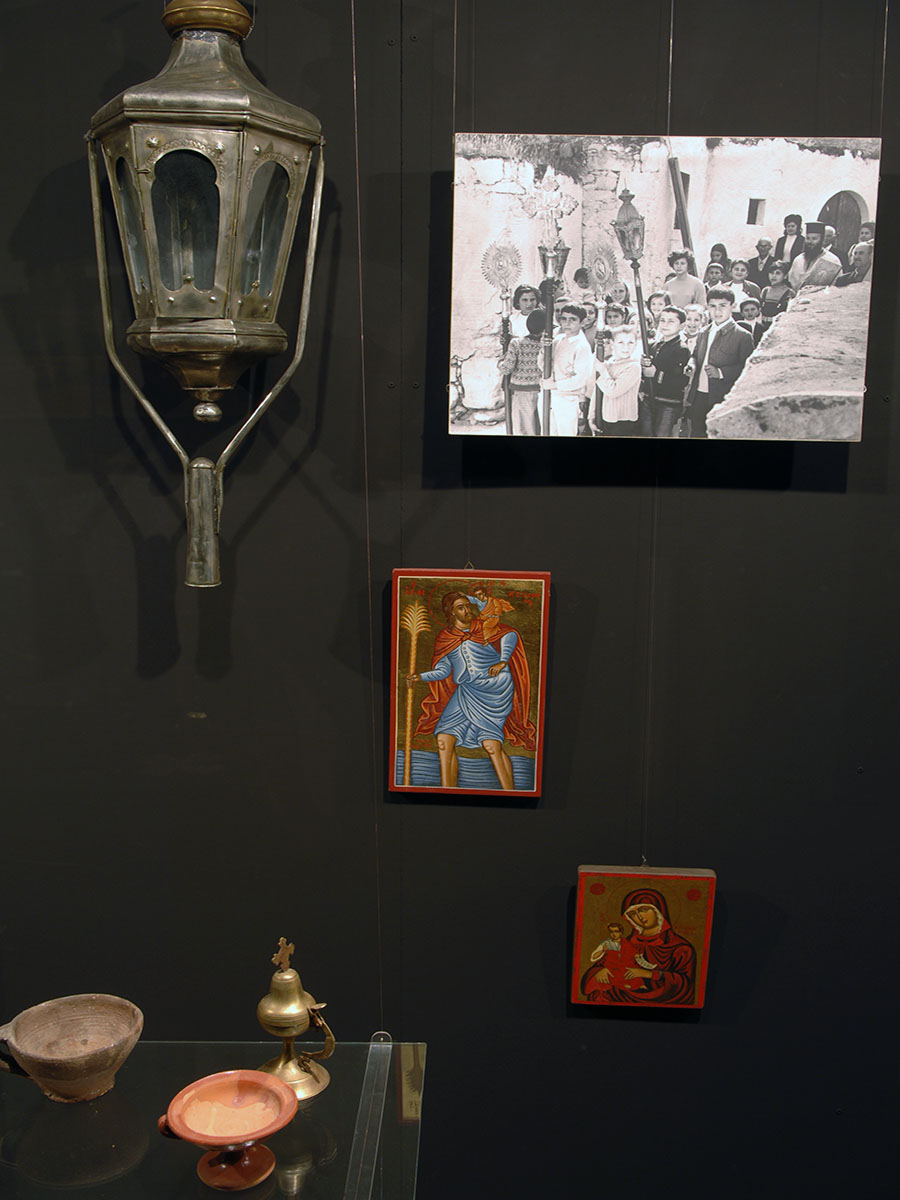Exhibition
Presentation Of Exhibits By Section
Religion
Christianity was introduced to Crete with the sermon of St Paul circa 50 AD. The church of Crete was founded by St Titus, and is Orthodox, autocephalous and directly answerable to the Patriarchate of Constantinople. The clergy, modest and liberal, are closely connected to rural society.
Mass is celebrated every Sunday and on important religious festivals such as Easter, Christmas and saints’ days. On these occasions festivals are organised by the inhabitants of the surrounding villages, with food, music, traditional songs and dances.
Liturgical objects include the priest’s robes worn during Mass, and various altar vessels with their traditional symbolic form and decoration.
The voice of the church is the bell which calls the faithful to prayer and services. The bell is a means of communication which can be heard at a considerable distance and convey various messages according to how it is rung. The western European church bell was not widely used in Crete until recently. Instead, there was the simandro (semanterion), an ancient instrument widespread in the Eastern Churches. This is a flat, slightly curved sheet of metal 40-60 cm long, with three holes in each end to improve the resonance. It is hung up and struck with a metal mallet or other metal object

The church offering vessels are candlesticks in various shapes and sizes. In Greek churches the candles are made of beeswax. This becomes a dark brown colour when the candle is heated repeatedly during the manufacturing process.
Oil-lamps with wicks are used for lighting churches. They are suspended over the large icons of the rood screen.
Various other liturgical objects include the processional banners and lights, censers etc.
Babies are baptised in the ceramic or metal font. This is filled with warm water in which the priest submerges the infant, after anointing its body with little crosses using a brush dipped in oil.

